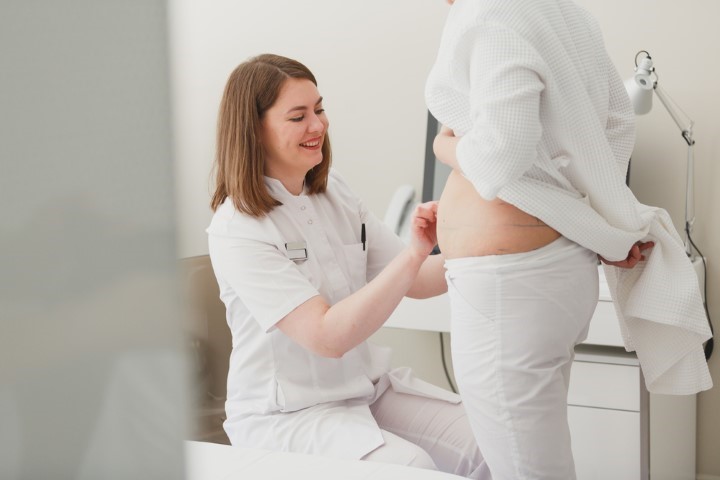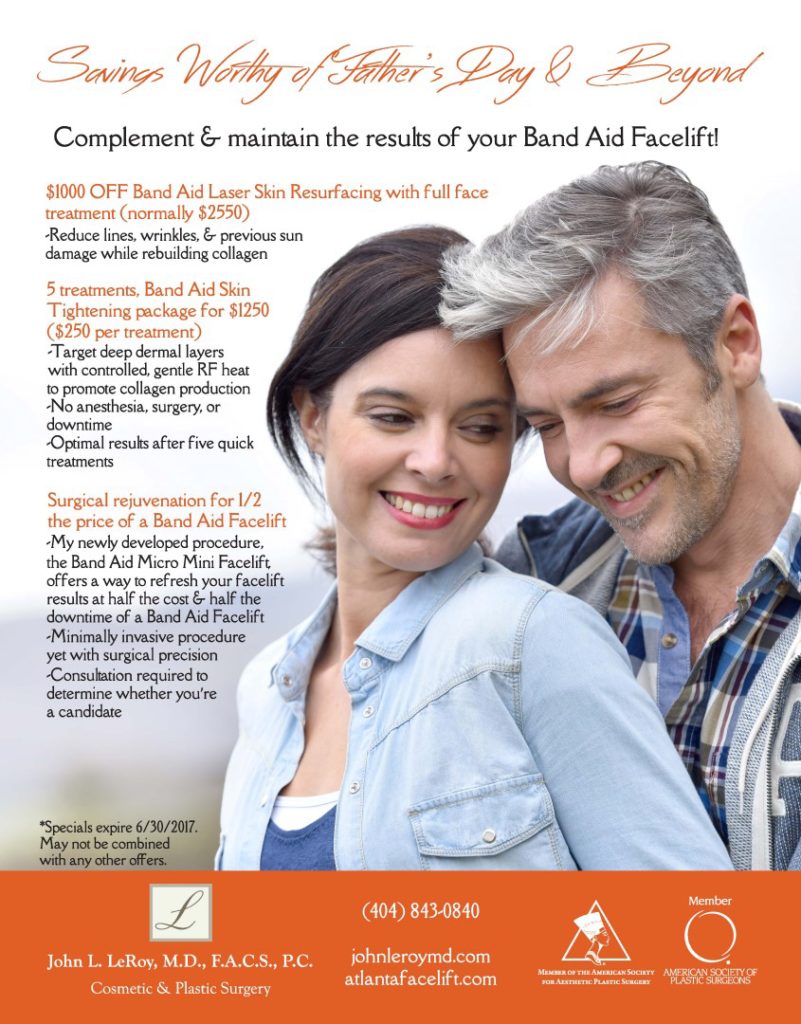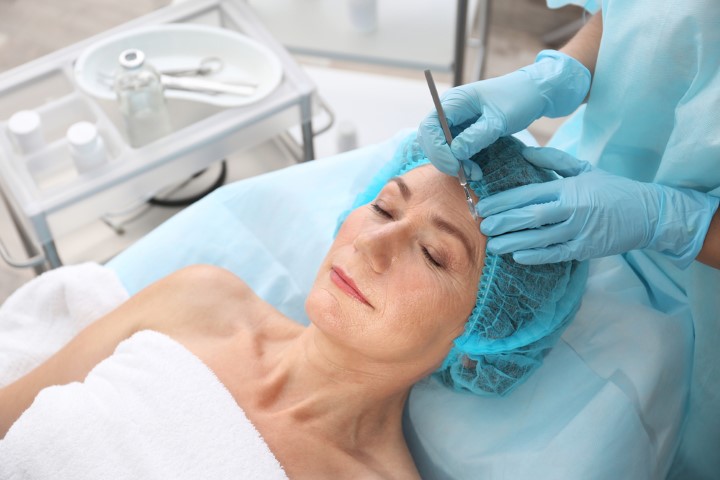
admin
Posts by admin :
- Affordable Surgeries
- Anti-aging
- Arm Lift
- Band Aid Eyelid Surgery
- Band Aid Facelift
- Band Aid Liposuction
- Band Aid Mini Facelift
- Band Aid Procedures
- Breast Augmentation
- Breast Reduction
- Brow Lift
- Coronavirus (COVID-19)
- Cosmetic Procedures
- Ear Surgery
- Eyelid Surgery
- Facelift
- Facial Fillers
- Facial Rejuvenation
- Latest News
- Liposuction
- Mommy Makeover
- Monthly Specials
- Neck Lift
- News Room
- Patient Reviews
- Patient Testimonials
- Rhinoplasty
- Skin Resurfacing
- Testimonials
- Tummy Tuck
- Uncategorized

Common Myths about Liposuction
Nearly all of us have at least one area of our body that we want to slim down, so it’s no surprise that fat removal—called liposuction—has long been among the most popular cosmetic surgeries in the country. But it’s also one of the most misunderstood surgeries, too. As a double board-certified plastic surgeon, I strive to educate patients and potential patients about the field of plastic surgery, so to help you know the true facts about liposuction, I’ve compiled answers to some of the most common liposuction myths that might trick you.

While both weight loss and liposuction have the goal of reducing fat, they’re done in two very different ways and for two very different purposes. For the most part, you have the same number of fat cells throughout your life, and weight gain and weight loss happen when these fat cells either enlarge or shrink. Liposuction, on the other hand, manually removes some of the fat cells in an extremely specific area. The core difference is that weight loss, for people who are overweight, reduces total body fat (including the fat surrounding internal organs, the type that tends to cause health problems) for overall better health and a slimmer appearance throughout the entire body. Liposuction, on the other hand, is designed for people who are already a healthy weight and simply have one or a few specific “problem areas” (like “love handles” or a “double chin”) for which they just need a cosmetic fix. So the bottom line is that if you’re overweight, it’s best to lose weight the old fashioned way and then, if necessary, use liposuction to polish off the cosmetic results after you’ve reached your goal weight.
Myth #2: After liposuction has removed fat cells, the fat is gone for good.
Technically, the excess fat cells liposuction removes won’t grow back. However, your remaining fat cells (both in the treatment area and throughout the rest of your body) are just as capable of enlarging as they were before. Taking in more calories than you’re burning can and will result in weight gain regardless of whether you’ve had liposuction, so the best way to make sure your treatment area stays slender is to keep up with a healthy diet and exercise regimen.
Myth #3: Liposuction is much easier than other plastic surgeries, so it doesn’t need to be performed by a true plastic surgeon.
Liposuction uses very tiny incisions (just a few millimeters long), but that doesn’t actually mean that it’s not a “serious surgery.” Any surgery carries risks, and while the complication rates for liposuction (and other cosmetic surgeries) are low, there’s no need to risk your safety by having it performed by an unqualified provider. Even when it’s performed in a minimally invasive way to treat a particularly small area, like my Band Aid Liposuction, choosing an experienced and knowledgeable surgeon is not something you should take lightly. To find a surgeon with high credentials and experience, look for a board-certified plastic surgeon who has earned and been granted membership into several professional organizations (such as the American Society of Plastic Surgeons and the American Society for Aesthetic Plastic Surgery) like me.
Myth #4: Any kind of fat can be removed with liposuction.
Liposuction can treat nearly any area of the body, literally from head to toe. But it removes a very specific type of fat called subcutaneous fat—the type of fat that has the most impact on appearance. It cannot remove the type of fat that grows inside the abdomen under the muscle and around the internal organs (called visceral fat, the type that tends to lead to health problems), nor can it reduce the appearance of cellulite (which is caused by a combination of fat within the skin and a few other factors). This is why liposuction is a purely cosmetic procedure, and does not offer the health benefits that weight loss does.
Myth #5: Liposuction is being replaced by non-surgical fat reduction.
It’s exciting to watch medical technology advance, and in the past several years, a number of non-surgical fat reduction devices have hit the market, and they’re seeing great popularity. However, liposuction continues to become more and more frequent, actually showing a 32% increase in the past five years (according to the American Society for Aesthetic Plastic Surgery). So why hasn’t non-surgical fat reduction stolen liposuction’s thunder? First of all, non-invasive treatments don’t offer the same amount of control that liposuction does. Surgical fat removal allows a surgeon to actually sculpt specific contours, while non-surgical therapies simply reduce the overall number of fat cells in a localized area. And second, many patients who choose non-invasive fat reduction are people who either are not candidates for surgery or have chosen not to have surgery, so these new non-surgical treatments simply offer an option for patients who did not have one in the past.
Sculpting your ideal physique is truly a team effort between you and your cosmetic surgeon. Ultimately, the best results come to patients who are committed to staying on top of their health with diet and exercise, and who use plastic surgery for its true purpose: resolving very specific, localized cosmetic bulges of fat. To find out if you’re a candidate for liposuction, schedule a consultation with me, Dr. John L. LeRoy. And, for more helpful plastic surgery information and health tips, follow me on Facebook, Twitter, and Google+.
Ask Dr. LeRoy: What Should I Expect on the Day of My Facelift?
Having a few butterflies in your stomach before plastic surgery is incredibly common, and in many cases, patients are simply nervous because they don’t know exactly what to expect. While there’s no replacement for actually experiencing the process for yourself, as a double board-certified plastic surgeon who has specialized in face lifts for over twenty years, I can walk you through the day of your surgery so you have a better idea of what to expect.
By the day of your procedure, you will have received plenty of specific instructions about what to avoid and how to prepare before face lift surgery. For example, when to stop smoking if you smoke, when to stop taking certain medications and supplements, when to stop eating the day of or night before surgery, etc. When you wake up on surgery day, be sure to continue following these instructions closely. You’ll put on comfortable clothing that doesn’t need to be taken off over your head, like a button-up shirt. Without applying any makeup or skin care products for the day (which is a welcome break, for some patients), you’ll also wash your face with antibacterial soap and take any pre-surgical medications you were instructed to take, like antibiotics. All of this information will be included in the pre-surgical instructions you will receive when you schedule your surgery.
When it’s Time for Surgery
When your appointment time is near, you’ll head to either my office (if you’re having a Band Aid Mini Facelift or a Band Aid Micro Mini Facelift) or to Perimeter Surgical Center, the facility where I perform traditional face lifts. Before the actual surgery begins, you’ll have some paperwork to fill out, and my nurse Dorothy will check your blood pressure and provide other preparations, including your “before” picture.
If you’re having a traditional facelift with general anesthesia (so that you will be unconscious throughout the surgery), your anesthesia will be administered before surgery by an anesthesiologist (or by a nurse anesthetist overseen by an anesthesiologist). If you’re having an in-office Band Aid Facelift, on the other hand, your surgical preparation will depend on whether you will receive only local anesthesia (gentle numbing for the treatment area) or local anesthesia with sedation as well. You and I will discuss and decide all of these details in advance at your pre-surgical consultation, so you’ll know exactly what to expect ahead of time.
Your surgical time will depend on the extent of your procedure, your unique anatomy, and a number of other factors. In general, though, a Band Aid Mini Facelift takes about an hour and a half, while a traditional face lift can take anywhere from two to four hours. Halfway through the procedure, Dorothy typically comes out to the waiting area to give an update to any friends or family members who are waiting for you. When your surgery is finished, you’ll have a dressing applied to the area to provide gentle pressure and protect your incisions. You may or may not also have a drain to release any excess fluids.
All in all, Band Aid Facelift patients typically spend a total of 2 ½ hours in our office. Face lift patients vary considerably more based on their procedure, and the process as a whole takes longer as well because these patients need more time in the recovery room to recuperate from the anesthesia before they head home. Both traditional face lifts and Band Aid Mini Face Lifts are performed on an outpatient basis, so you can look forward to spending that first night resting comfortably at home.
After Surgery
If you receive a traditional facelift or if you receive sedation for your Band Aid Mini Face Lift, you will need to have a friend or family member drive you home and stay with you for at least the first night. If you receive only a local anesthetic with no sedation, you can safely drive, although some patients still choose to have a friend or family member drive them home so they can be fully comfortable.
While there is always some discomfort associated with surgery, the pain after a facelift is generally quite bearable and can be managed with medication. Just remember to carefully follow all of the post-surgical instructions you were given ahead of time, because some over-the-counter pain relievers are not safe to take after surgery. For the most part, you should spend the rest of your surgery day relaxing comfortably, reclined at a 30- or 45-degree angle (not lying flat), and taking frequent, gentle walks to keep your circulation active.
Because I tailor the surgical process to each patient’s needs, everyone experiences their face lift in a slightly different way. But overall, my best advice for nervous patients is to find a way to relax, trust yourself that you’re well-prepared, and trust your surgeon to operate safely and successfully. For the vast majority of patients, a facelift is a rather uneventful process, ending with beautiful results that leave them feeling happier and more confident in their appearance. To get started on your facelift journey, schedule a consultation today with me, Dr. John L. LeRoy. Or, for more plastic surgery tips and information, follow me on Facebook, Twitter, and Google+.
How a Facelift and Non-Surgical Treatments Work Together
There are several different levels of facial rejuvenation procedures. The mildest tend to be injectables (like Botox®, Dysport®, Restylane®, Juvéderm®, etc.), then other non-surgical treatments (such as Band Aid Laser Skin Resurfacing and Band Aid Skin Tightening), followed by minimally invasive surgery (including my Band Aid Mini Facelift and Band Aid Micro Mini Facelift, both of which are performed in-office with gentle numbing), and finally traditional cosmetic surgery like face lifts, eyelid surgery, and neck lifts. This allows every patient to choose a procedure or combination of procedures that best fits their unique needs.
But it’s important to recognize that this isn’t a step-by-step process. In other words, patients don’t generally start with fillers, then abandon fillers in favor of laser treatments, then stop laser treatments to get a Band Aid Mini Facelift, and so on. Instead, each cosmetic procedure has its own focus and purpose, so getting your ideal results at every stage of the aging process typically involves a combination of a few different options to treat your individual concerns. For instance, you may get consistent filler injections in your 30s and 40s, but when you begin to develop sagging skin, you might choose a Band Aid Facelift to restore a firmer, younger-looking facial structure, then simply use Botox® and/or facial fillers to treat the few remaining fine lines, wrinkles, and lost volume that will appear over the coming years.
To find out more about how multiple types of facial rejuvenation can work together, check out my video below:
As a double board-certified plastic surgeon who specializes in facial rejuvenation, my ultimate goal is to help every patient be their most confident and beautiful self, whether that involves injections, non-surgical treatments, plastic surgery, or a combination of each. To discuss your cosmetic concerns and receive a treatment recommendation, schedule a consultation with me today. Or, for more plastic surgery tips, helpful videos, and more, follow me, Dr. John L. LeRoy on Facebook, Twitter, and Google+.

A Look at the 2016 Plastic Surgery Statistics
Every plastic surgeon recognizes the trends in their own practice—the procedures that are most popular, the average ages of their patients, the number of men vs. women, etc. But each year, the American Society for Aesthetic Plastic Surgery (ASAPS) gathers statistics based on a survey that is distributed to around 30,000 board-certified physicians. These numbers help us to discover, on a national level, the changes within the plastic surgery field. The 2016 data has recently been published, and it offers us new insights into the way surgical and non-surgical cosmetic procedures are meeting the needs of patients throughout the country.

- Cosmetic medicine continues to grow in popularity.
Trends change every year, so some procedures are more or less popular than they were a few years ago, but overall the number of surgical and non-surgical cosmetic procedures has been growing. In fact, this year, Americans spent over $15 billion on aesthetic medical treatments for the first time since ASAPS began collecting data in 1997.
- Non-surgical cosmetic treatments are increasing more quickly than surgeries are.
In the past year, the number of plastic surgeries in the US has increased by 3.5%, while the number of non-surgical procedures has increased by 7.3%. This may partially be because technology continues to improve non-surgical options, but it also shows that patients value convenience. I have seen this hold true within my own practice as well, with the number of patients who come in to ask about my minimally invasive Band Aid Mini Facelift and Band Aid Micro Mini Facelift as opposed to a traditional face lift.
- Brow lifts are being replaced by other facial rejuvenation options.
Between 1997 and 2016, the national number of face lifts has risen by nearly 22%, and the number of eyelid surgeries has risen by over 9%. Brow lifts, on the other hand, have decreased by nearly 39%. In one of my recent blogs, I explained that I very rarely perform brow lifts today, because the results patients are looking for can generally be achieved in less invasive ways instead, and the data gathered by ASAPS demonstrates this strategy on a national level as well.
- Over half of face lifts are performed for patients between the ages of 51 and 64.
While plastic surgeries overall had the largest numbers among patients between 35 and 50, face lifts are actually more popular among patients in their 50s and 60s. Even though most people begin to see early signs of aging in their early 30s, a true face lift isn’t necessary until the aging process reaches a certain level, so for patients in their 30s and 40s, less invasive procedures like injectables, laser treatments, non-surgical skin tightening, or even a mini facelift can keep wrinkles and sagging skin at bay.
As a plastic surgeon, studying cosmetic procedure statistics gives me a unique look into my future patients’ needs, goals, and priorities. And for potential patients, the information can help you gain perspective about the field and recognize that you are by no means alone in the desire to be your most confident and beautiful self. To discuss your surgical and non-surgical cosmetic options, schedule a consultation with me, Dr. John L. LeRoy. Or, for more unique plastic surgery facts and health tips, follow me on Facebook, Twitter, and Google+.


